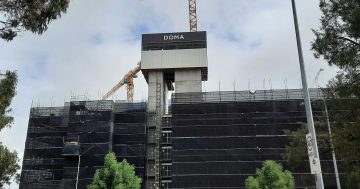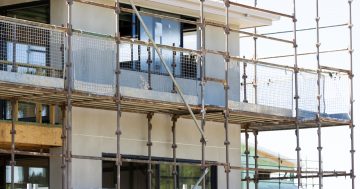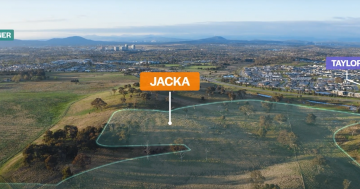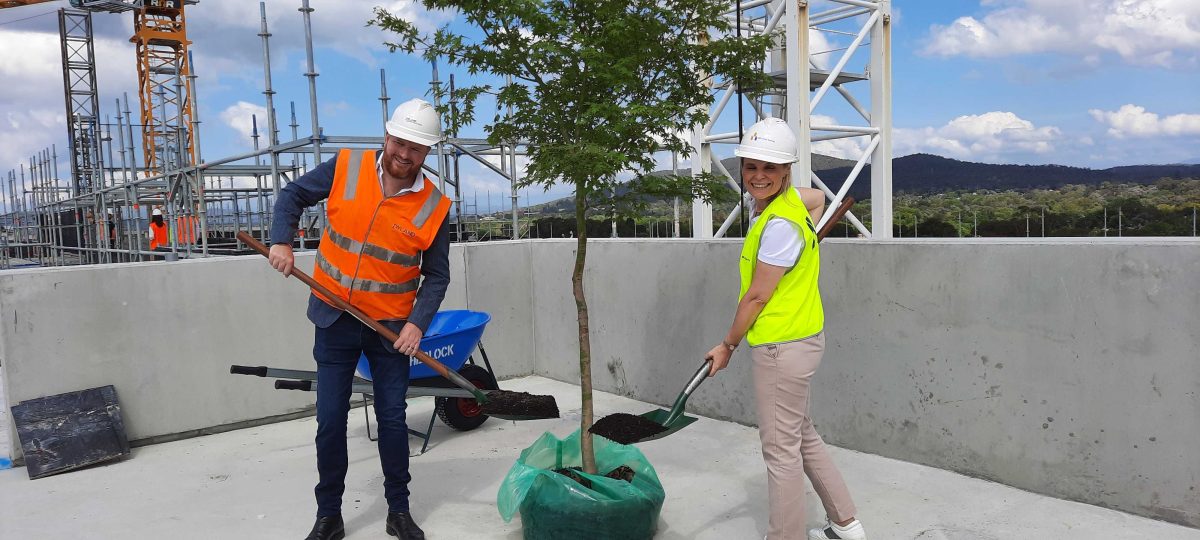
JWLand CEO Michael Prendergast and Master Builders ACT CEO Anna Neelagama do the spade work at the De Burgh topping-out ceremony. Photos: Ian Bushnell.
Approval times are improving, but developers are still being loaded up with requirements that are tying up capital, cutting into already tight margins and slowing the delivery of much-needed housing, according to one of Canberra’s biggest apartment builders.
JWLand CEO Michael Prendergast was speaking at the topping out ceremony for the third and final 350-apartment stage of its Northbourne Village development in Lyneham, called De Burgh, which is on track for completion in spring.
Down Northbourne Avenue in Braddon sits its Braddon Place site, which was approved last year but is still in the process of sorting out conditions attached to the Notice of Decision.
Mr Prendergast said the Territory Planning Authority and the industry were now making headway in approval times but that had come out of long processes and should have happened two or three years ago.
He said a lack of clarity and definition in the National Capital Plan amendment for Northbourne Avenue and the Territory Plan had been confusing and caused delays for both projects.
“When you lodge a DA or an element of a design, it’s very easy for somebody to say that is non-compliant or it doesn’t conform, but it’s because the description itself isn’t very descriptive,” he said.
“The process has happened now. Unfortunately, it’s also happened at the same time where now the majority of the land on Northbourne Avenue has been DA approved, and I suppose the result of that has really just been that the precinct has taken a little bit longer to deliver than what it needed to.”
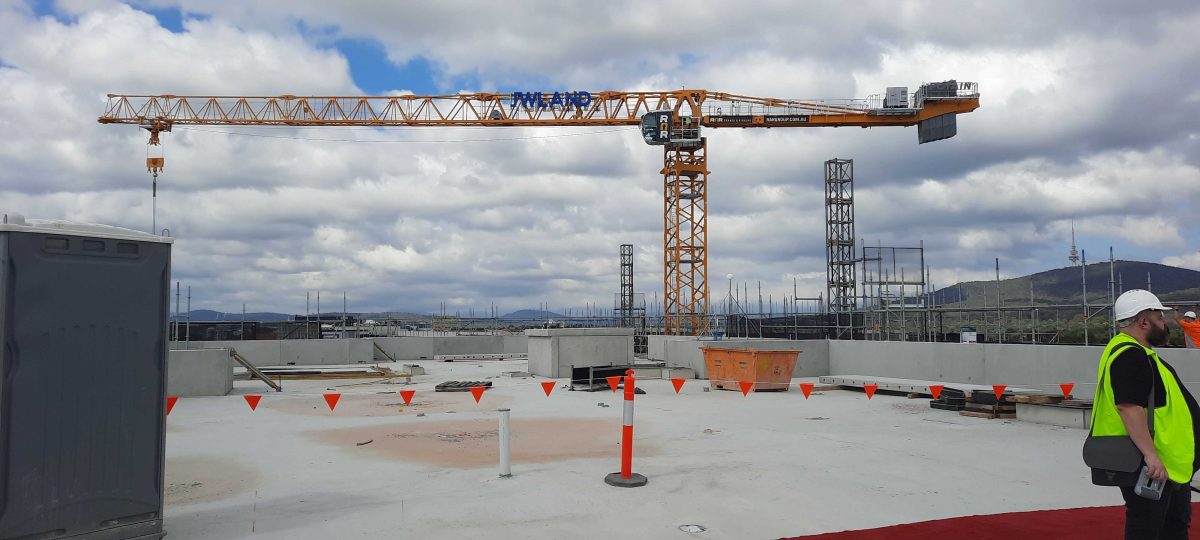
View from the top. Photo: Ian Bushnell
Mr Prendergast said the government’s bond requirements for holding land were a significant burden for developers, slowing down projects and putting companies at risk.
For example, its Belconnen site, which JWLand bought 2.5 years ago has an $8 million bond attached to it.
“The raw cost of that capital is not doing anything for our organisation because it’s being held by the government, but it actually stops you from doing other things,” he said.
Mr Prendergast said the industry needed to be more vocal about this issue because holding three or four sites like JWLand does could tie up more than $20 million.
He said the land was sold through deeds that should offer the government sufficient security without adding a financial impost.
Developers also faced too many requirements on the new blocks of land being released, including size, affordability, and external work that could amount to millions of dollars.
Mr Prendergast said land release with design competitions attached just added to the uncertainty.
“How do you make a decision on who gets a block of land through a design competition when it takes historically three or four for that outcome to be chosen,” he said
These were all making it much more challenging to plan a feasible development and meet the government’s land price points.
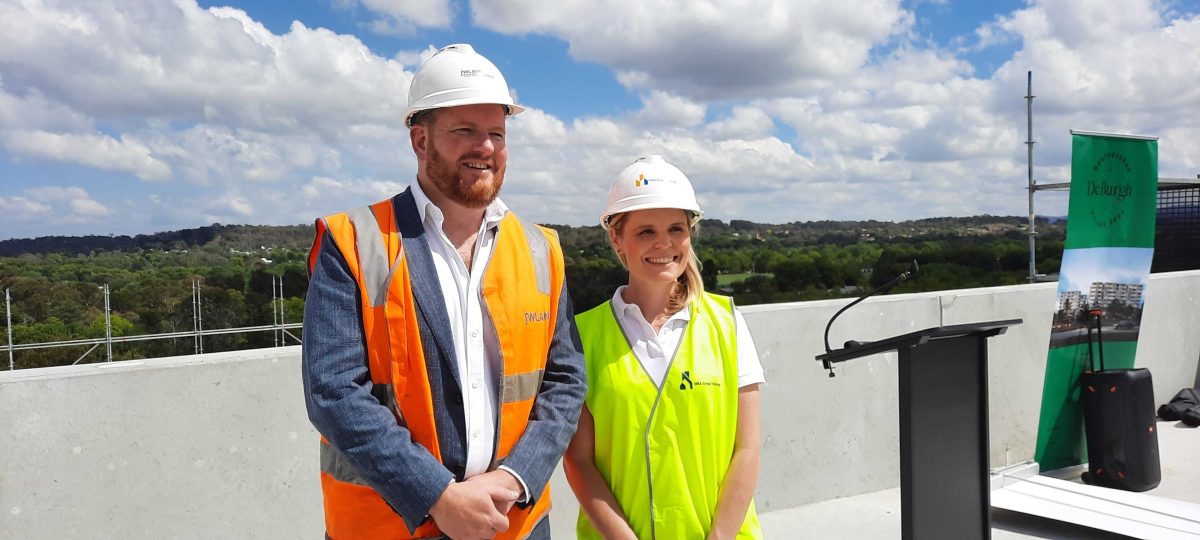
JWLand CEO Michael Prendergast and Master Builders ACT CEO Anna Neelagama want faster approval times and less red tape.
Master Builders ACT CEO Anna Neelagama said the industry was ready and willing to help the government achieve its housing targets but it needed support on skills, costs and approval times, especially in the current economic environment.
At present, the industry is not on track to achieve them.
Ms Neelagama said all the government agencies in the approval chain needed to be on the same page and talking to each other.
“They need to just really have a one-stop shop,” she said.
“There’s no greater priority than getting more homes on the ground in the ACT, which is what they have said, now they need to get their public service to deliver.”
Ms Neelagama said there needed to be more skills incentives for employers to get homes built more quickly. She added that the MBA welcomed moves to license contractors.
“We are devastated when we see parts of complexes that are not built to the very high quality that they should be because the rest of the industry suffers and the consumer suffers,” she said.
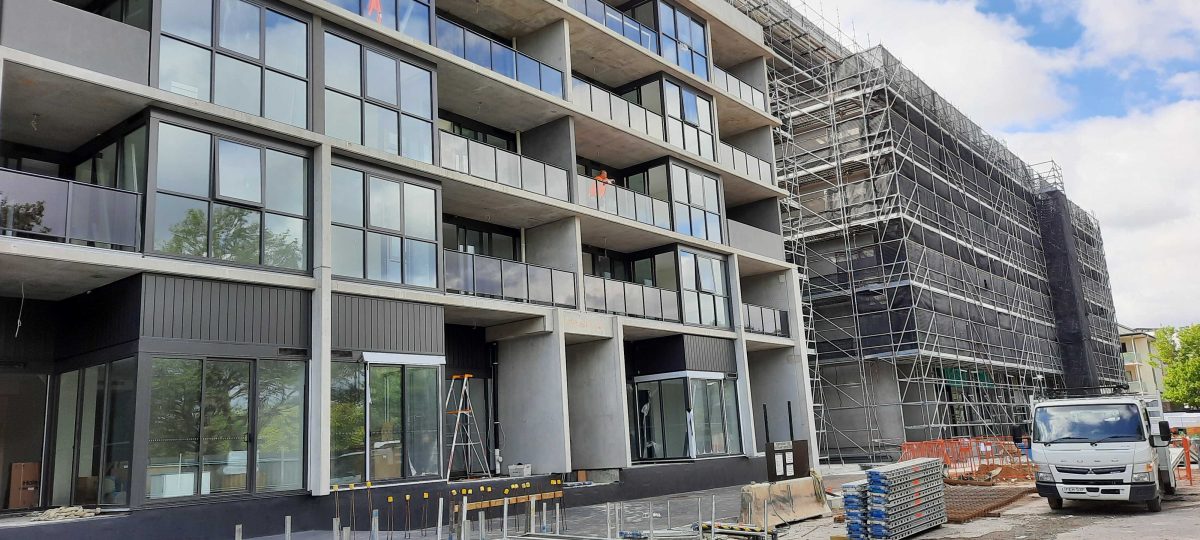
There are still one-, two-, and three-bedroom apartments available at De Burgh.
Ms Neelagama said property tax settings, including lease variation charges, needed to be looked at in a higher interest rate environment because these costs were inhibiting development in the ACT.
“There’s a broad range of things that can be done, but I think it starts with getting the right amount of regulation occurring and getting timely approvals through,” she said.
More land releases would be welcome, but they needed to be affordable.
“Look, they need to fast track the right kind of approvals, but then they also need to get all the government agencies involved in the approval chain talking together and working together across utilities and heritage.”
There are still one-, two-, and three-bedroom apartments available at De Burgh.
When completed, the Northbourne Village precinct will deliver more than 696 apartments plus a 134-room hotel.












